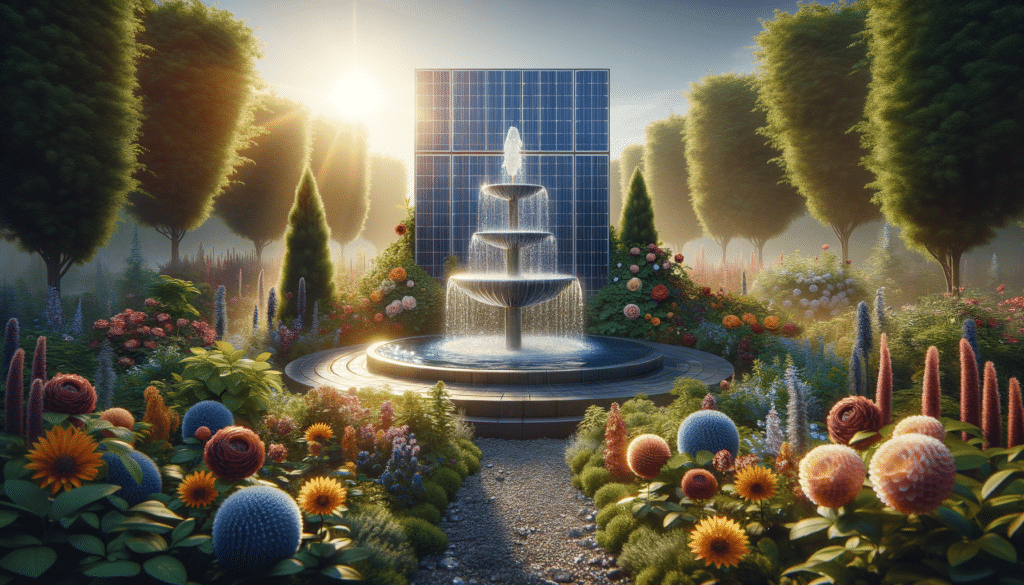The Rise of Solar-Powered Water Fountains
In recent years, solar-powered water fountains have become increasingly popular among garden enthusiasts and environmentalists alike. This surge in popularity can be attributed to a growing awareness of environmental issues and the desire for sustainable living solutions. Solar-powered water fountains harness the energy of the sun to operate, eliminating the need for electricity and reducing the carbon footprint of your garden. This makes them an ideal choice for those looking to enhance their outdoor spaces while being mindful of their environmental impact.
These fountains are not only sustainable but also versatile, coming in various designs and sizes to fit any garden style. From classic tiered fountains to modern minimalist designs, there is a solar-powered fountain to suit every taste. The ability to place these fountains anywhere in the garden without worrying about power outlets or extension cords adds to their appeal, allowing for creative and flexible garden designs.
Moreover, solar-powered water fountains can contribute to the health of your garden ecosystem. The gentle sound of flowing water can attract birds and beneficial insects, promoting biodiversity. Additionally, the movement of water can help to oxygenate ponds or water features, supporting aquatic life. With these numerous benefits, it’s no wonder that solar-powered water fountains are becoming a staple in gardens around the world.
How Solar-Powered Water Fountains Work
Understanding the mechanics of solar-powered water fountains can deepen appreciation for their design and efficiency. At the core of these fountains is a solar panel, which captures sunlight and converts it into electrical energy. This energy is then used to power a pump, which circulates water through the fountain, creating a continuous flow.
Solar panels used in these fountains are typically made from photovoltaic cells, which are capable of converting sunlight into electricity even on cloudy days. This means that your fountain can operate consistently, provided it receives sufficient light. Some models also come with battery backups, allowing the fountain to store energy during the day and continue operating during the night or on overcast days.
Key features of solar-powered fountains include:
- Solar panels: Typically made from durable materials, ensuring longevity and efficiency.
- Pumps: Designed to be energy-efficient, minimizing power consumption while maximizing water flow.
- Battery backups: Available in some models for continuous operation without direct sunlight.
Understanding these components can help in selecting the right fountain for your garden, ensuring optimal performance and satisfaction.
Benefits of Adding a Solar-Powered Fountain to Your Garden
Incorporating a solar-powered water fountain into your garden offers numerous advantages beyond its aesthetic appeal. One of the primary benefits is its eco-friendly nature. By utilizing solar energy, these fountains reduce reliance on conventional electricity sources, contributing to lower energy bills and a reduced carbon footprint.
Another advantage is the ease of installation and maintenance. Without the need for electrical wiring, setting up a solar-powered fountain is straightforward and can be done without professional assistance. Maintenance is also minimal, as these fountains are designed to be self-sufficient and durable.
Additionally, solar-powered fountains can enhance the ambiance of your garden. The soothing sound of flowing water can create a tranquil atmosphere, making your garden a serene retreat from the hustle and bustle of everyday life. This can have positive effects on mental well-being, providing a space for relaxation and reflection.
In summary, the benefits of solar-powered water fountains include:
- Eco-friendliness: Reduced energy consumption and environmental impact.
- Cost-effectiveness: Lower energy bills and minimal maintenance costs.
- Aesthetic enhancement: Adds beauty and tranquility to outdoor spaces.
Choosing the Right Solar-Powered Fountain for Your Garden
Selecting the perfect solar-powered water fountain for your garden involves considering several factors. First, assess the size and style of your garden. A large, ornate fountain may be suitable for a spacious garden, while a smaller, more understated design might be ideal for a compact space.
Next, consider the placement of the fountain. Ensure that the chosen location receives adequate sunlight to power the solar panel. If your garden has shaded areas, opt for a fountain with a separate solar panel that can be positioned for maximum sun exposure.
When evaluating different models, pay attention to the quality of materials and construction. Look for fountains made from durable materials such as resin, stone, or metal, which can withstand outdoor conditions. Additionally, check for features such as adjustable water flow and battery backups, which can enhance functionality and convenience.
Lastly, consider your budget. Solar-powered fountains are available at various price points, so it’s important to find one that offers the features you desire without exceeding your budget. By taking these factors into account, you can select a fountain that complements your garden and meets your needs.
Maintenance Tips for Solar-Powered Water Fountains
To ensure the longevity and optimal performance of your solar-powered water fountain, regular maintenance is essential. Start by cleaning the solar panel regularly to remove dust and debris, which can obstruct sunlight and reduce efficiency. Use a soft cloth and mild detergent to gently clean the surface, avoiding harsh chemicals that could damage the panel.
Inspect the pump periodically to ensure it is functioning correctly. Remove any debris or algae that may have accumulated, as this can impede water flow and cause the pump to work harder than necessary. If your fountain has a filter, clean or replace it as needed to maintain clear water.
During colder months, consider draining the fountain and storing it indoors to prevent damage from freezing temperatures. If this is not possible, ensure that the fountain is adequately covered and insulated to protect it from the elements.
By following these maintenance tips, you can prolong the life of your solar-powered fountain and continue to enjoy its beauty and benefits for years to come.





